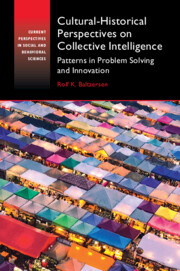Contents
1What Is Collective Intelligence?
3Open Online Knowledge Sharing
5The Origins of Human Swarm Problem Solving
6Human Stigmergic Problem Solving
6.6What Is Human Stigmergic Problem Solving?
6.6.2“Rating Complete Solutions” as Marker-Based, Quantitative Stigmergy
6.6.3“Reestimating Solutions” as Quantitative, Sematectonic Stigmergy
6.6.4“Completing Solutions” as Qualitative, Sematectonic Stigmergy
6.6.5“Adapting Complete Solutions” as Sematectonic, Qualitative Stigmergy
6.6.6Improvement of Solutions as the Basis for Human Stigmergic Problem Solving
7The Origins of Human Stigmergic Problem Solving
8Collaborative Problem Solving

